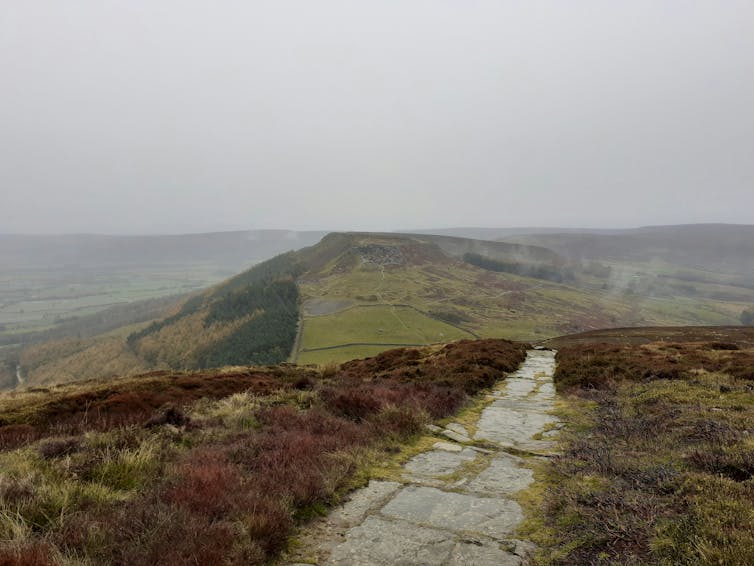Source: The Conversation – France in French (2) – By Olivier Roche, Chercheur en volcanologie, Institut de recherche pour le développement (IRD); Université Clermont Auvergne (UCA)

Une étude publiée très récemment dans la revue « Science » permet de mieux comprendre le moteur des éruptions volcaniques : la formation des bulles dans le magma.
Les observations faites depuis des décennies dans diverses régions du monde montrent que les éruptions volcaniques sont caractérisées par deux types de comportement en surface. D’un côté du spectre, le magma qui remonte depuis les profondeurs de la Terre est émis calmement sous forme de coulées ou de dômes de lave, caractérisant ainsi le style « effusif ». C’est le cas des volcans d’Hawaï ou de La Réunion dont les éruptions quasi annuelles font souvent l’actualité dans les médias.
À l’opposé, un mélange turbulent de gaz et de cendres est éjecté violemment dans l’atmosphère, définissant ainsi le style « explosif ». Le mélange forme un panache qui s’élève dans un premier temps à des altitudes pouvant atteindre 40-50 kilomètres et qui finit souvent par s’effondrer sous l’effet de la gravité pour former des nuées ardentes dévastatrices qui se propagent à haute vitesse le long du sol. Un exemple célèbre est l’éruption du Vésuve en l’an 79 de notre ère qui détruisit les villes de Pompéi et d’Herculanum.
Les données collectées par les scientifiques montrent que le comportement d’un volcan comme le Vésuve peut changer au cours du temps, alternant les périodes effusives et explosives, à cause de variations de la nature des magmas et des conditions de stockage en profondeur. Dans ce contexte, comprendre les mécanismes fondamentaux des éruptions volcaniques afin de mieux prédire leurs conséquences est un enjeu sociétal et environnemental majeur compte-tenu qu’environ 600 millions de personnes dans le monde vivent dans des zones potentiellement touchées par les aléas volcaniques.
Comprendre l’origine des bulles dans le magma
Le moteur des éruptions volcaniques est la formation des bulles de gaz dans le magma. En particulier, la temporalité de la formation puis de la croissance des bulles, le volume qu’elles occupent et leur capacité à ne pas se séparer du liquide magmatique contrôlent la dynamique de la remontée du mélange dans le conduit volcanique vers la surface et, au final, le style éruptif décrit ci-dessus (Figure 1A). C’est dans ce cadre que nous avons mené une étude pour mieux comprendre l’origine de la formation des bulles, un phénomène appelé « nucléation ». Les résultats de nos travaux ont été publiés le 6 novembre dans la revue Science.

Fourni par l’auteur
Jusqu’à présent, les volcanologues ont considéré que la nucléation des bulles était déclenchée principalement par la décompression du magma saturé en gaz dissous (essentiellement de la vapeur d’eau) lors de l’ascension dans le conduit. En effet, chacun a déjà constaté l’effet produit par l’ouverture trop rapide d’une bouteille de boisson gazeuse : lorsque la pression chute, le liquide qui contient du gaz dissous (CO2 dans ce cas) devient sursaturé, et des bulles de gaz se forment alors rapidement, croissent, et entraînent le liquide vers le goulot de la bouteille. Au cours de la nucléation, la différence de pression entre un embryon de bulle et le liquide est connue comme une source d’énergie mécanique qui contribue à faire croître l’amas gazeux alors que la tension superficielle du liquide s’y oppose, et au-delà d’une taille critique, l’embryon devient une bulle qui croît spontanément.
Or, les différences de vitesse au sein d’un magma en mouvement génèrent des forces dites de cisaillement qui pourraient être une autre source d’énergie mécanique apte à déclencher la nucléation. C’est le cas en particulier dans un conduit volcanique en raison d’une différence de vitesse entre les bords, où le frottement est important, et le centre (Figure 1A).
L’importance des forces de cisaillement
Nous avons testé cette hypothèse au moyen d’expériences dites analogiques, réalisées dans des conditions de température et avec des matériaux différents de ceux dans la nature. Les expériences sont faites dans un rhéomètre, un équipement utilisé pour mesurer la capacité des fluides à se déformer. Ce dispositif permet de cisailler une couche d’oxyde de polyéthylène liquide à 80 °C et sursaturé en CO2, laquelle simule le magma dans la nature. Les expériences montrent que la nucléation de bulles de gaz est déclenchée lorsque la force de cisaillement appliquée atteint une valeur seuil qui décroît avec la teneur en CO2 (Figure 1B). De plus, le cisaillement cause le rapprochement puis l’agglomération en de plus grosses bulles et ainsi leur croissance. Nos données expérimentales sont en accord avec un modèle qui indique que la taille minimale pour qu’un embryon de bulle puisse croître est de près d’un millionième de millimètre. Ces résultats sont complétés par des simulations moléculaires qui confirment que la nucléation se produit si le cisaillement est suffisamment fort (Figure 1C).
Nous avons finalement extrapolé nos résultats aux systèmes volcaniques en tenant compte du rapport des pressions mises en jeu et des propriétés des magmas. L’analyse montre que la nucléation par cisaillement peut se produire dans un conduit dans presque tous les cas, et nous en tirons deux conclusions principales. La première est qu’un magma pauvre en gaz dissous, et donc a priori non explosif, pourrait néanmoins conduire à une éruption violente en raison d’un important cisaillement causant une nucléation massive. La seconde est qu’une nucléation efficace dans un magma très visqueux et très riche en gaz dissous, couplée à la décompression lors de la remontée et à une agglomération et à une croissance rapide des bulles, peut conduire à la formation de chenaux de dégazage connecté à la surface et engendrer, paradoxalement, une éruption non violente. Ce processus peut être renforcé lorsque la nucléation se produit à proximité de bulles préexistantes, comme le montrent nos expériences. Ce mécanisme explique l’observation contre-intuitive faite depuis longtemps par les volcanologues selon laquelle les magmas très visqueux et contenant de fortes teneurs en gaz dissous peuvent produire des éruptions effusives.
Nos travaux suggèrent que la nucléation induite par cisaillement doit désormais être intégrée aux modèles mathématiques de conduits volcaniques développés par les volcanologues et qui permettent de prédire les dynamismes éruptifs. En couplant cette approche à d’autres modèles qui simulent des coulées de la lave, des panaches ou des nuées ardentes, il est ainsi possible de définir les zones potentiellement atteintes par les produits des éruptions. Cette tâche est essentielle pour la gestion des risques naturels et pour la protection des populations qui vivent à proximité des volcans actifs.
![]()
Olivier Roche a reçu des financements du programme I-SITE CAP 20-25 piloté par l’UCA.
Jean-Michel Andanson a reçu des financements ANR, CNRS, Université Clermont Auvergne, commission européenne, Fond national Suisse.
– ref. Pour prédire si un volcan sera effusif ou explosif, il faut s’intéresser à ses bulles – https://theconversation.com/pour-predire-si-un-volcan-sera-effusif-ou-explosif-il-faut-sinteresser-a-ses-bulles-269664















